In this guide, you will find recommendations on 10 popular dishes you should try when visiting Japan. Whether it’s cheap or fancy meals, here are plenty of options that won’t disappoint.
Contents of this publication:
1. Sushi (寿司)
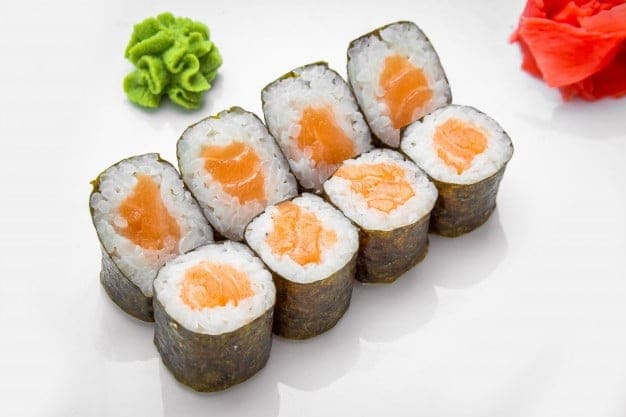
In Japan, Tokyo is the sushi capital of the world, it’s just everywhere, and there are options for all budgets, from cheap and informal to the most exquisite and expensive. In Tokyo, you can get a great selection of seafood at a low cost and of excellent quality.
Where to eat Sushi in Japan?
Some recommended restaurants to eat sushi in Tokyo (and throughout Japan) are the following:
Matsuei (Ebisu, Roppongi)
Kyubei (Ginza, Shinjuku, etc.)
Sushi no Midori (Ginza, Shibuya, etc.)
2. Ramen (ラーメン)

Ramen mainly consists of Chinese-style noodles, meat-based broth, soy sauce, sliced pork, seaweed, and onions. There are so many different variations of ramen (including the instant microwave one), and each recipe can be easily customized based on your diet.
We can also find different types of ramen, such as tonkatsu ramen, shio ramen, miso ramen, spicy shoyu ramen, tsukemen, and cold ramen.
Where to eat Ramen in Japan?
Some places to enjoy Ramen in Japan are:
Afuri (Ebisu, Nakameguro, Harajuku, Roppongi, etc.)
Sobahouse Konjiki Hototogisu (Shinjuku Gyoen)
Kagari (Ginza)
3. Tempura (天ぷら)
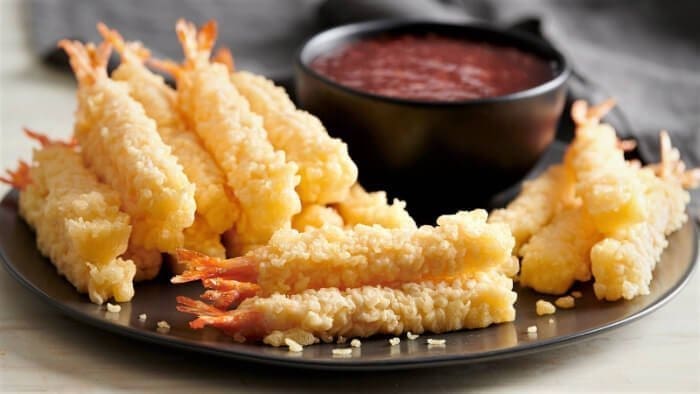
Tempura-like sushi is one of the most common dishes served outside of Japan as well. Something that makes tempura unique compared to others is its dough. This dough does not use breadcrumbs, and its frying method has less fat. The tempura dough is made from beaten egg, flour, and cold water, and sometimes starch, oil, or spices can be added.
This dish is made of chicken, the breasts marinated just before being fried in a mixture of soy sauce, ginger, and sugar are usually used. They are also prepared with prawns and shrimp cleaned inside and out. Before frying, they are macerated for a few minutes in a mixture of sake and sea salt, and they can be previously battered in a mixture of icy water, flour, and egg.
Where to eat Tempura in Japan?
Some places to enjoy Tempura in Japan are:
Tempura Abe (Ginza)
Tsunahachi (Shinjuku, Ginza, Tokio, etc.)
4. Yakitori (焼き鳥)
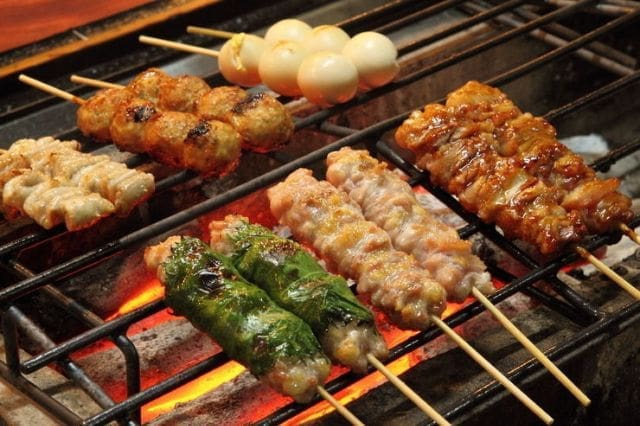
Yakitori is a low-cost, informal meal easily found in specialty yakitori-ya, izakaya, and many other restaurants in Japan.
Yakitori are skewers made from grilled chicken prepared to the size of a bite. These skewers are traditionally made with the different parts of the chicken, such as breast, thighs, skin, liver, and other entrails. However, they can also be prepared from other meats and vegetables with a sweet soy glaze.
Where to eat Yakitori in Japan?
Some recommended places to enjoy Yakitori in Japan are:
Torikizoku (Shinjuku, Shibuya, Tokio, etc.)
Torishiki (Shinagawa)
5. Japanese Curry (カレー)
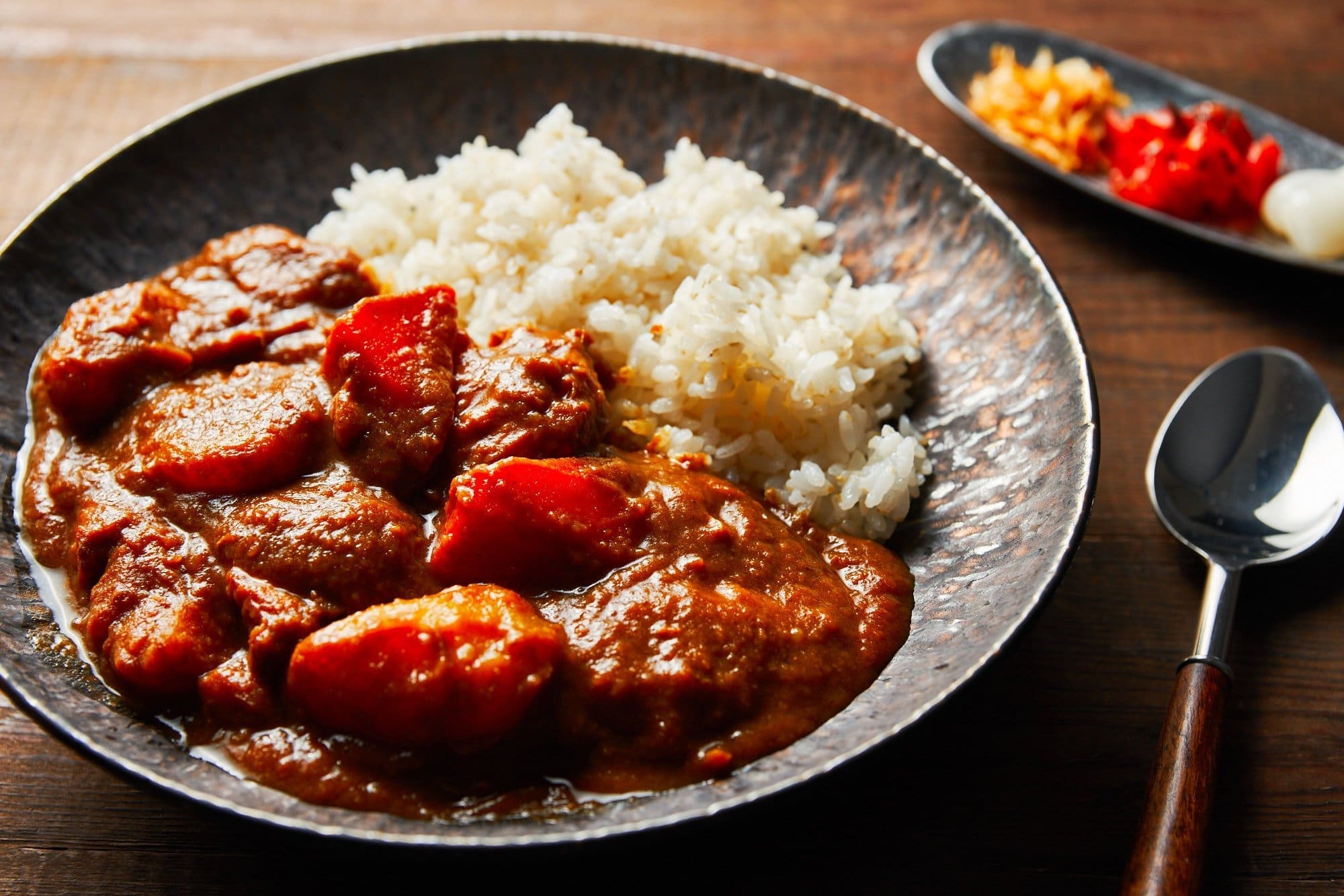
Japanese curry is considered one of the most popular foods in the country (you could say that for all its generations). You can find it available in almost every restaurant in Japan, and even outside the country, especially in Asia.
Japanese curry has a texture similar to that of a stew, composed of meats, vegetables such as onions, carrots, and potatoes.
Curry came to Japan via the British, ending the time of the 1800s. At first, it consisted of a western-style stew mixed with curry powder. But then Japan created its own version.
Where to eat curry in Japan?
Some recommended places to enjoy Japanese curry are:
Hiroo no Curry (Hiroo)
Curry Hinoya (Shinjuku, Ikebukuro, Shibuya, etc.)
6. Soba (そば)
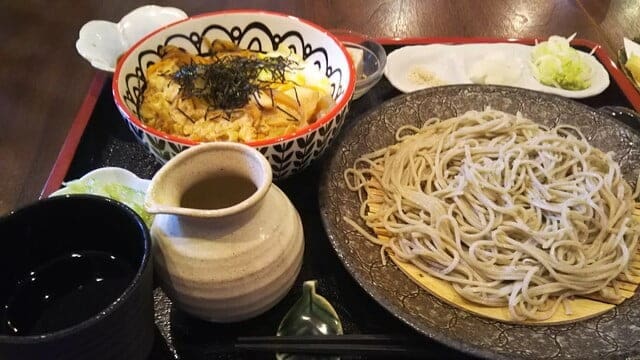
Made from buckwheat flour, soba is a classic noodle dish in Japan and is believed to represent Japanese cuisine, along with sushi and tempura.
Soba is served in a hot soup or cooled and served in a colander and dipping sauce. Cold menus are usually zarusoba (filled with nori seaweed) and morisoba (without nori seaweed filling).
Soba is a fairly common menu that Japanese eat regularly and is available in various restaurants, from specialty restaurants to Tachigui (to be eaten standing up). They are also famous for eating them at home because it is ready in a few minutes after pouring the hot water.
When soba noodles have nori seaweed as a cover, they are called zarusoba; once they do not have them, they are called morisoba.
Like several other Japanese dishes, there are several local differences with soba noodles.
In the Kanto area, a soba soup is dark in color and rich in flavor because it is made by boiling katsuobushi (bonito flakes) with koikuchi shoyu (dark in color) mirin, and sucrose.
However, soba in the Kansai area is served in a soup whose flavor is concentrated in that it is produced from bonito / dashi seaweed. It is seasoned and seasoned by usukuchi shoyu (light in color).
Where to eat soba in Japan?
Some recommended places to enjoy Japanese Soba are:
Kawakami An (Azabu Juba, Aoyama)
Kanda Yabusoba (Kanda)
Honmura An (Roppongi)
7. Tonkatsu (とんかつ)
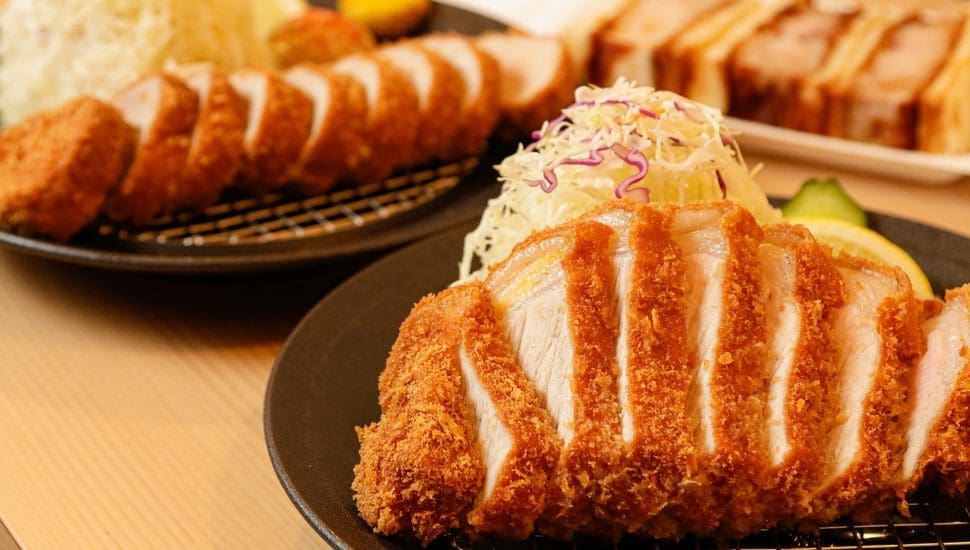
Tonkatsu (と ん か つ, “pork chop”) are thick slices of pork breaded and fried in the same way as German schnitzel. Generally, they are made with 2 cuts of pork: the lean and tender meat and the fattier rosu.
While tonkatsu is by far the most recognized katsu dish, there are variations such as chicken (chikinkatsu), beef (gyukatsu), ham (hamukatsu), and ground beef (menchikatsu).
Tonkatsu parts are mainly sliced and served in one of the following dishes:
- Tonkatsu
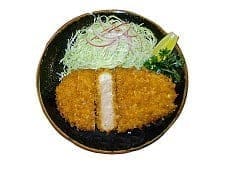
It is a dish that can be informal; it is usually served with a sweet and savory sauce, along with steamed rice, shredded cabbage, pickles, and miso soup. Diners mainly have the possibility to choose which cut they want when ordering.
The tonkatsu slices are seasoned with mustard and a Worcestershire sauce (tonkatsu sauce), which can be drizzled over the tonkatsu or poured aside as a topping.
- Katsudon (かつ丼)
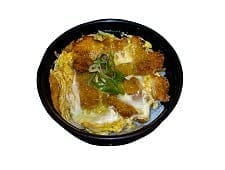 It is a donburi (rice bowl) dish in which sliced tonkatsu is cooked with a mixture of eggs and onions and served on a plate of rice.
It is a donburi (rice bowl) dish in which sliced tonkatsu is cooked with a mixture of eggs and onions and served on a plate of rice.
- Katsu Kare (か つ カ レ ー)
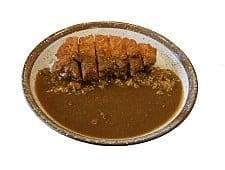 It is a Japanese curry rice dish topped with tonkatsu. In most cases, it is served on a large plate, and a spoon is used instead of chopsticks to eat it.
It is a Japanese curry rice dish topped with tonkatsu. In most cases, it is served on a large plate, and a spoon is used instead of chopsticks to eat it.
- Katsu Sando (か つ サ ン ド)
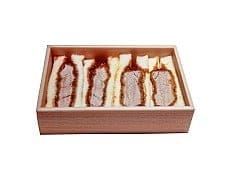 They are sandwiches made of tonkatsu and shredded cabbage on white bread. They are seasoned with tonkatsu sauce or mayonnaise. Unlike the previous 3 dishes, katsu sando is mainly not served in restaurants; however, it is usually available at railway stations and kiosks as takeaway food.
They are sandwiches made of tonkatsu and shredded cabbage on white bread. They are seasoned with tonkatsu sauce or mayonnaise. Unlike the previous 3 dishes, katsu sando is mainly not served in restaurants; however, it is usually available at railway stations and kiosks as takeaway food.
Where to eat Tonkatsu in Japan?
Some recommended places to enjoy Japanese Tonkatsu are:
Tonki (Meguro)
Butagumi (Azabu)
Tonkatsu Maisen (Aoyama, Shibuya, etc.)
8. Udon (うどん)
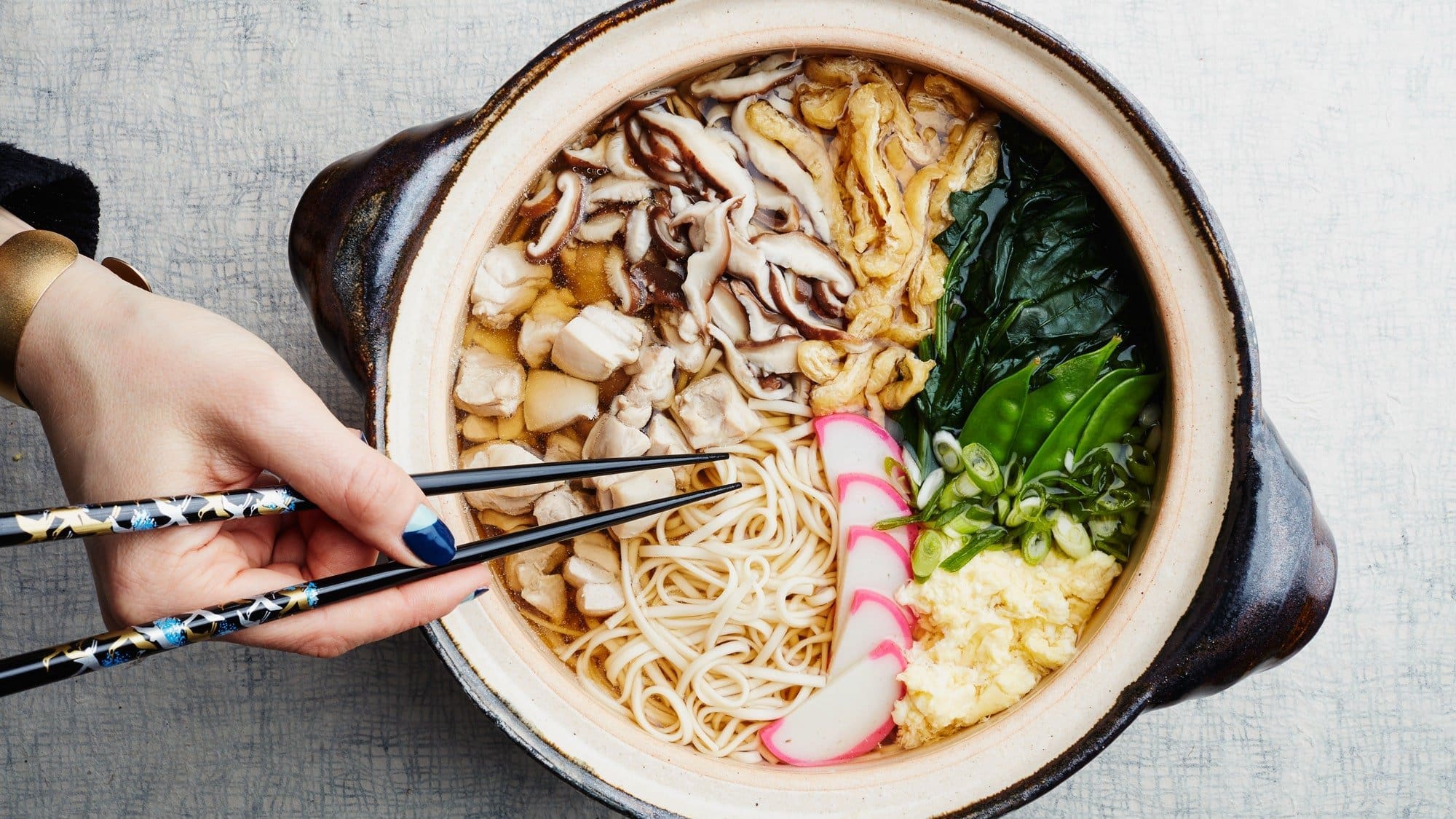
Udon (う ど ん) are thick Japanese noodles made from wheat flour. They are thicker than soba noodles, white, and chewier. Udon is widely available in restaurants throughout Japan and is made into various hot and cold dishes.
Popular Udon variations
Here is a list of udon dishes that can be found in many food places in Japan. It is possible to find some regional distinctions in terms of names and seasonings.
- Zaru Udon (cold)
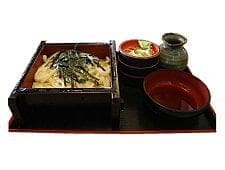
Zaru Udon noodles are chilled and served on a bamboo mat. They are accompanied by a dressing sauce and dipped in it before eating. It is very similar to Zaru Soba, with the exclusive difference that it is noodles that changes.
- Kake Udon (hot)
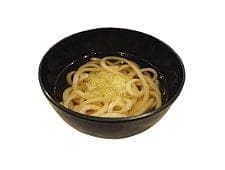
Kake Udon is a simple udon dish, served in a hot broth that covers the noodles. It has no seasonings and is mainly garnished only with green onions.
- Kamaage Udon (hot)
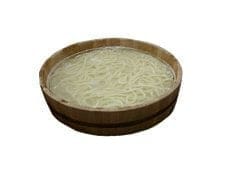
Kamaage Udon noodles are served in hot water, accompanied by various seasonings and a dressing sauce. Certain sites offer the Kamaage Udon in small wooden bowls per individual serving, and other sites serve them in family-type servings in large wooden shared noodle containers.
- Tanuki Udon (hot / cold)
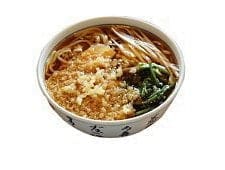
Tanuki Udon is served in a hot broth topped with leftover fried tempura batter (tenkasu). Tanuki Udon is not primarily served in Osaka, as tenkasu is commonly available for free at udon restaurants.
- Kitsune Udon (hot / cold)
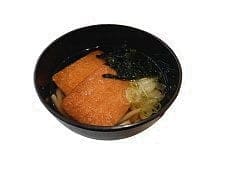
Kitsune Udon is served in a hot broth with aburaage, thin slices of fried tofu, placed on top of the udon noodles.
- Tsukimi Udon (hot)
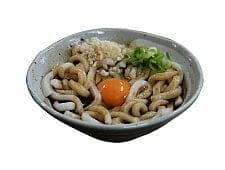
Tsukimi Udon (“Moon Viewing Udon”), like her soba counterpart, carries a raw egg on top of the udon noodles, which seek to resemble the moon.
- Tempura Udon (hot / cold)
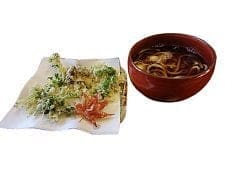
Tempura Udon is served in a hot broth with the tempura chunks placed on top of the noodles. Sometimes the tempura is placed on a separate plate next to the noodle bowl or tray. Tempura ingredients vary by season and store.
- Curry Udon (spicy)
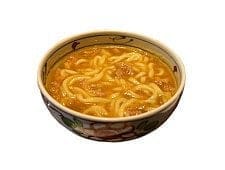
Udon curries are udon noodles served in a Japanese curry dish. It is a popular dish in winter. Since eating udon curry can be difficult (it splashes a lot), some food outlets offer disposable bibs.
- Chikara Udon (hot)
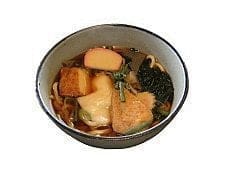
Chikara Udon is udon noodles served with a rice cake (mochi) in the hot broth. The Japanese term “chikara”, which means strength, is used since it is believed that mochi gives strength to the diner.
- Nabeyaki Udon (hot)
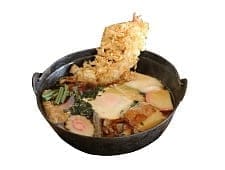
Nabeyaki Udon is a dish that is cooked and served in a hot pot (called a nabe). The udon noodles are cooked directly in the nabe along with the broth and vegetables. It is common to add tempura before serving and mushrooms, egg, kamaboko (a steamed fish cake), and numerous vegetables. It is mainly found in food places in the coldest months of the year.
Where to eat udon in Japan?
Different restaurants specialize in udon (udon-ya) and soba restaurants (soba-ya), informal food places such as izakaya, and tourist sites. There are also well-known, low-cost udon restaurant chains.
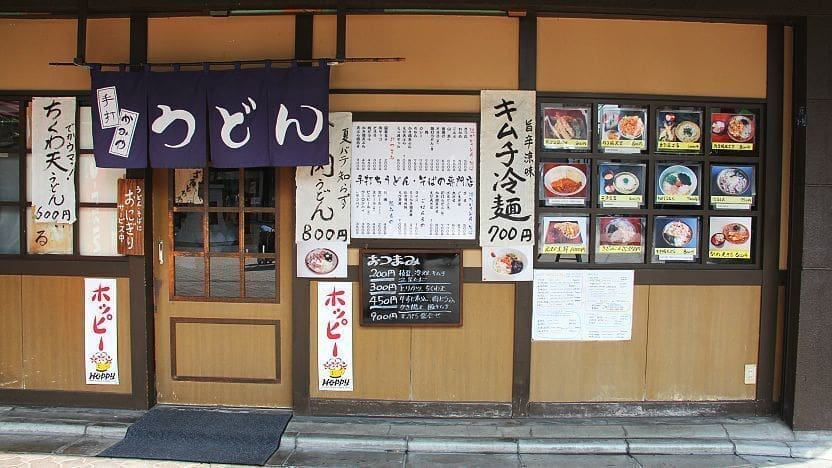
A plate of udon usually costs between 500 and 1000 yen, although you can get them in udon chain restaurants even for less than 500 yen. On the other hand, in more exclusive places or specialized in more elaborate udon, the price is between 1000 and 1500 yen per person.
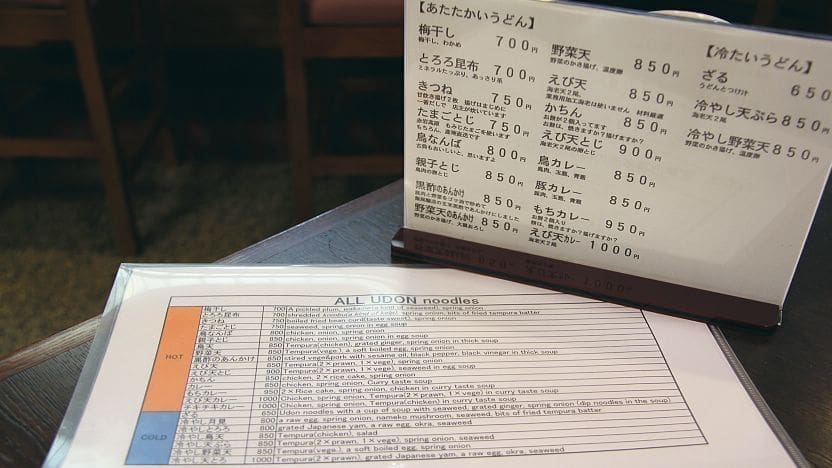
Some recommended places to enjoy Japanese Udon are:
Oniyanma (Gotanda, Nakameguro, Shimbashi, etc.)
Tsurutontan (Roppongi, Shinjuku, Ginza, etc.)
Conclusion
With this, we end this gastronomic guide of foods that you must try if you go to Japan.
And to you, which of these dishes did you find the most appetizing? have you already tried any? or do you have any recommendation that is not on this list?
If so, do not hesitate to leave your comments about it. We will love to read you!
Sayōnara (さようなら)

0 Comments